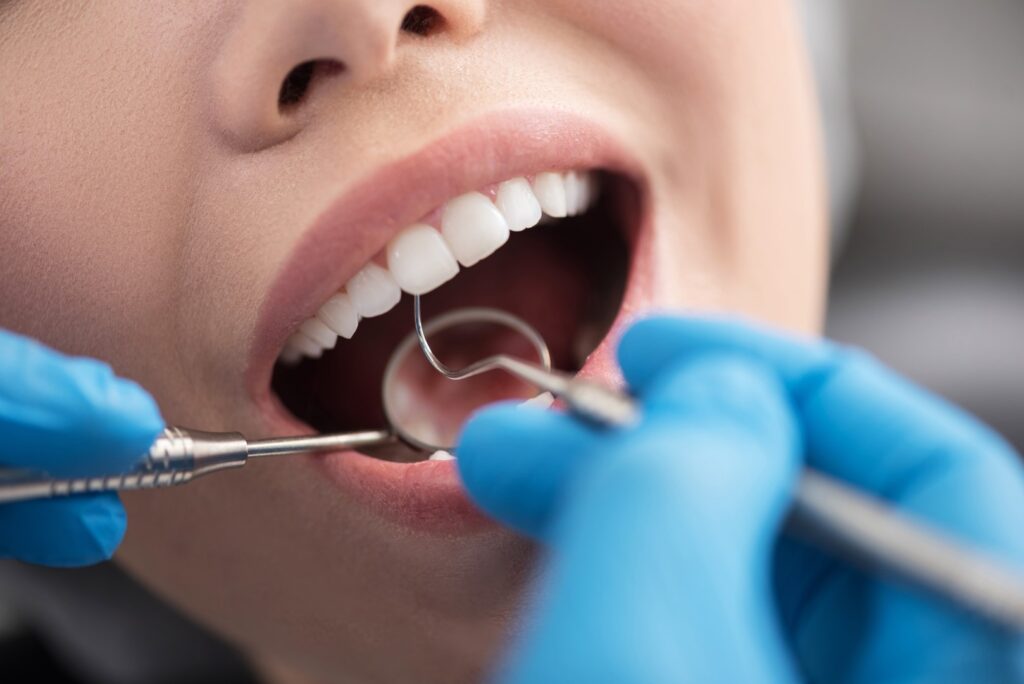Cavities and tooth decay are some of the most common dental problems that people experience and are especially common in children, teenagers and older adults. Cavities are caused by a number of different factors including frequent snacking, drinking sugary drinks, and not cleaning your teeth well. If they aren’t treated, cavities can get large and affect the deeper layers of your teeth, so it’s important to brush your teeth well and see your dentist regularly to help prevent cavities.
We’ve broken down the three main types of cavities and their common treatments to help you know what to look for.

Interproximal Cavities
Interproximal cavities appear in between your teeth. These cavities form when plaque and bacteria stick to the tooth and are not removed with proper flossing. These cavities cannot usually be seen visually in the mouth and require an x-ray to diagnose them. If left untreated, the cavity will grow and lead to pain, sensitivity or fracture of the tooth. In some cases, a root canal may be required if the cavity spread into the nerve.
Pit & Fissure Cavities
These cavities are commonly found on the rear molars, they occur on the chewing surfaces of the teeth. Because it is easy for food to become stuck in the grooves along the top of teeth, pit and fissure cavities are relatively common. One of the best things to do to try to avoid pit and fissure cavities is to brush your teeth regularly.
If they are found early enough, some pit and fissure cavities can be treated with a sealant. If a cavity becomes deeper, a dentist will have to first remove the decay, then repair the tooth with a filling. Depending on the size of the cavity, a root canal or crown may sometimes be used instead of a filling.

Root Cavities
Root cavities are common in older adults, specifically seniors, who are more likely to have gum disorders such as receding gums. When the gums recede, the tissue around the tooth is much lower which leaves the root surfaces to become exposed. This makes the root more susceptible to bacteria and decay.
The root of your tooth doesn’t have any protection in the form of enamel, so tooth decay can spread quickly. It is important to treat root cavities as soon as possible. Treating root cavities starts with your dentist removing any decay, then filling the cavity with a filling. If the cavity has spread to the pulp of the root, a root canal is typically needed. In some instances where the cavity is large or a root canal is necessary, your dentist may also recommend a crown.
No one likes having cavities, so remember to maintain proper oral hygiene to prevent cavities as much as possible. By brushing and flossing your teeth well, visiting your dentist regularly, and eating foods that are good for your teeth, you can help combat cavities and keep your mouth happy and healthy.
Do you think you might have a cavity? Contact us today to book an appointment with one of our experienced dentists!

